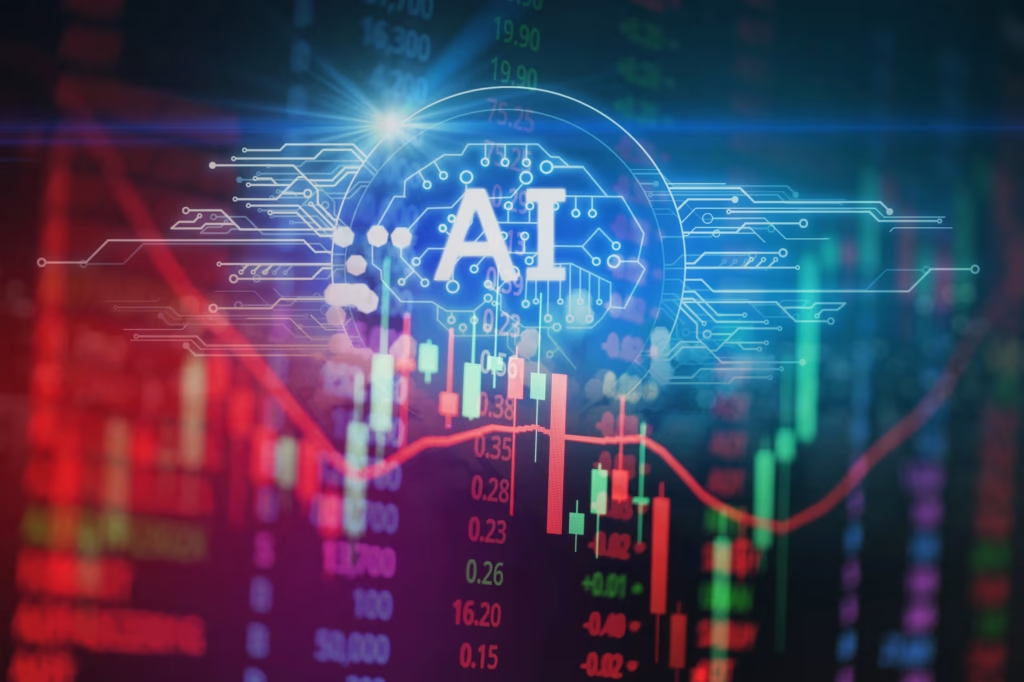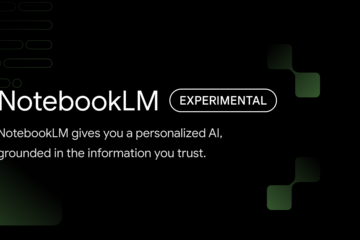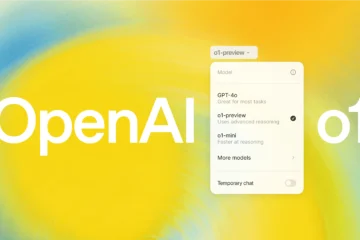AI-related stocks have stumbled, headlines are anxious, and the word “bubble” is back in circulation. Yet market drawdowns rarely map cleanly onto technological truth. What we’re witnessing is not the death of AI, but a necessary transition: from viral demos to production systems, from splashy launches to unit economics, from model centricity to end-to-end value chains. This article unpacks what the current correction really means for the technology itself, how the stack is evolving, and—most importantly—how practitioners and teams can position themselves for the “build phase” that follows hype.

When the Market Sneezes, Technology Catches Blame
Every technology cycle has a moment when enthusiasm trips over gravity. Prices fall; narratives rush to fill the void. If you’re building in AI right now, you’ve probably felt the temperature drop—internal budgets being reviewed, roadmap items re-prioritized, “nice-to-have” experiments put on pause. The reflexive conclusion is that the “AI bubble” is bursting.
But hype and value are not the same thing. Hype runs on attention; value runs on implementation. The stock market is a loudspeaker for sentiment. Engineering organizations are compilers for reality. The recent slump tells us more about investor expectations than it does about the feasibility of AI in products and operations. In fact, the industry is entering its most important stage: where the work gets harder, quieter, and far more consequential.
This is good news for serious builders, product leaders, and technologists. It means the signal-to-noise ratio is about to improve.
The Panic: Why Everyone Is Talking About an “AI Bubble”
A few forces are converging:
- Expectation Overhang. After breathtaking early successes, expectations ran ahead of what production systems could deliver. Decision-makers assumed that anything a demo could do, a business could scale—immediately. Reality insists on integration, reliability, compliance, and cost controls. That gap invites the “bubble” label.
- The Law of Large Numbers. As AI-heavy companies grew enormous, incremental surprises got rarer. When growth slows from spectacular to merely strong, the market often punishes the delta, not the absolute.
- Macro Friction. Higher rates, budget scrutiny, and shifting risk appetites amplify every disappointment. Projects that lived on narrative oxygen face tougher air at altitude.
- The Demo Trap. Early viral demos optimized for delight, not durability. They ignored the messy middle: data governance, edge cases, failure modes, observability. The bill for skipping those steps has come due.
From the outside, these frictions look like a bursting bubble. From the inside, they look like the real work finally beginning.
Market Correction vs. Technological Reality
Let’s draw a clean line between price and progress.
- Prices swing with mood, discount rates, and momentum.
- Progress compounds when engineering, design, and operations turn research artifacts into resilient systems.
On the ground, the last year delivered concrete advances that don’t disappear because multiples compress:
- Inference is getting cheaper and faster. Optimization techniques—quantization, pruning, KV-cache engineering, batching, speculative decoding—are cutting latency and cost. Tooling matures from scripts to platforms.
- Retrieval and grounding are becoming default. RAG (Retrieval-Augmented Generation) shifted from novelty to baseline. Better chunking, hybrid search, and domain-aware indexing improved faithfulness in enterprise settings.
- Observability is catching up. Token accounting, quality metrics, evaluation harnesses, drift detection, prompt/version control, and safety dashboards are moving from slideware to standard practice.
- Enterprise guardrails are clearer. Security, privacy, audit trails, and policy enforcement are turning ad-hoc “checklists” into codified workflows. The path through legal, risk, and compliance is still strict—but now legible.
- Applied multi-modality is arriving. Text-vision-audio workflows enable new use cases in support, field ops, inspection, content ops, and accessibility. Tool use (function-calling) and structured outputs enable systems to do useful work, not just chat.
Markets reset. Engineering stacks march on.
The Shift: From Viral Product to Invisible Infrastructure
Every general-purpose technology follows a similar arc: headline feature → system capability → background infrastructure. AI is making that turn.
- From “Chatbot as a Product” to “AI as a Fabric.” The question is no longer “Do we have a chatbot?” but “Where in our workflow does intelligence remove friction?” Authentication, routing, summarization, triage, forecasting, translation, extraction—small components everywhere, instead of one giant assistant doing everything.
- From Model Worship to Pipeline Thinking. Production value comes from the pipeline: data curation → retrieval → policy → reasoning → tool calls → verification → human-in-the-loop → logging/metrics → continuous improvement. Models matter; pipelines win.
- From One-Size-Fits-All to Domain-Shaped Systems. AI becomes compelling when it speaks the language of the domain—taxonomy, ontology, constraints, regulatory context. That means verticalization: healthcare workflows, legal drafting with citations, financial ops with evidence trails, industrial inspection with acceptance thresholds.
- From Centralized Genius to Collaborative Systems. Agents, planners, and tool-using models shift focus from “single omniscient brain” to composed capabilities—small, specialized, auditable behaviors that cooperate over workflows.
When AI runs as infrastructure, the best experiences feel boring in the best way: faster issue resolution, cleaner data handoffs, fewer swivel-chair tasks. Magic dissolves into muscle memory.

What’s Actually Hard About AI Now
The challenges that separate hype from production are less glamorous—and more valuable.
Cost and Latency
Every practical AI system is a negotiation between accuracy, speed, and price. Winning teams get ruthless about:
- Model Sizing. Right-sizing to the task (small/medium models locally or on edge for most flows; large models reserved for tough branches).
- Caching & Reuse. Replaying prior results when inputs match, using embeddings for semantic cache hits, memoizing validated tool outputs.
- Batching & Scheduling. Throughput-aware infrastructure, request bucketing, background processing for non-interactive tasks.
- Speculative/Two-Stage Inference. Fast draft from a lighter model, verified/refined by a stronger model on uncertain spans.
Data Quality and Governance
Most failures trace back to data: missing, mislabeled, stale, biased, or scattered across silos.
- Contracts over Datasets. Treat data like APIs: defined schemas, versioning, SLAs, lineage, ownership.
- Feedback Loops. Close the loop from outputs → human feedback → retraining/fine-tuning → updated retrieval.
- Permission Architecture. Attribute-level permissions, PII handling, audit logs, and deletion workflows.
Reliability and Evaluation
We can’t ship systems whose failures are surprising and opaque.
- Task-Specific Eval. Move beyond static benchmarks to scenario-based evaluations with golden sets, adversarial tests, and continuous monitoring.
- Guardrails and Policies. Declarative constraints (formats, ranges, forbidden actions), sandboxed tool use, and fallback behaviors.
- Human-in-the-Loop by Design. Confidence thresholds route edge cases to people; human decisions generate structured feedback for improvement.
Safety and Trust
Hallucinations, jailbreaks, and leakage are not PR problems; they’re system problems.
- Defense-in-Depth. Prompt hardening, content filters, anomaly detection, secrets isolation, output verification, and provenance markers.
- Explainability Where It Matters. Not academic “explanations,” but operational transparency: why a decision was made, which evidence supported it, and who can audit it.
Sustainable Business Logic
“Cool demo” is not a P&L line.
- Unit Economics. Cost per task, cost per resolution, savings per ticket, revenue per generated asset—choose your north star and instrument the pipeline.
- Time-to-Value. Projects that generate measurable value in weeks survive procurement winters.
- Integration Over Isolation. The ROI is in plumbing—connect AI to CRM/ERP/ITSM, knowledge bases, data warehouses, and identity systems.
What This Means for Practitioners and Teams
The career and capability map is shifting. That’s an opportunity.
Skills That Compound Now
- LLMOps & Platform Engineering. From ad-hoc notebooks to robust services: deployment, scaling, monitoring, evaluation, canarying, rollback.
- Retrieval & Knowledge Engineering. Chunking strategies, hybrid search, schema design, entity resolution, domain ontologies.
- Inference Efficiency. Quantization, distillation, caching, batching, KV-cache tricks, streaming UX patterns.
- Tool Use & Workflow Orchestration. Function-calling, tool schemas, agentic planners, safe execution, idempotent operations.
- Safety & Compliance. Data minimization, PII handling, red-teaming, policy enforcement, auditability.
- Product Sensing. Identifying where intelligence actually changes the curve—cutting steps, improving quality, collapsing handoffs.
30-60-90 Execution Blueprint for Teams
Days 1–30: Baseline, Instrument, Stabilize
- Map top 3 workflows by volume and pain.
- Add observability: token usage, latency, error/hallucination rates, deflection, CSAT/quality scores.
- Introduce a semantic cache; right-size the model for the 80% path; keep the big model for edge cases.
- Establish a red-team checklist and output policy.
Days 31–60: Optimize, Integrate, Verify
- Connect to systems of record (CRM/Helpdesk/ERP/Docs).
- Move to hybrid retrieval; add metadata and recency signals.
- Implement two-stage inference for sensitive tasks; add human review gates.
- Begin cost-to-value reporting: “$ per task,” “minutes saved,” “tickets deflected,” “errors caught.”
Days 61–90: Scale, Specialize, Govern
- Stand up an evaluation harness with golden datasets and scenario tests.
- Host multiple models; route by task complexity and confidence.
- Formalize data contracts, retention, and deletion policies.
- Publish a quarterly AI value report: concrete wins, cost trends, roadmap.
Career Positioning for Individuals
- Generalist → Systems-Fluent. Keep broad model literacy, but learn the interfaces: retrieval, tools, policies, observability.
- Demo-Crafter → Reliability-Engineer. Move from “look what’s possible” to “here’s how it fails and how we catch it.”
- Prompt-Hacker → Product Integrator. Connect AI to the real work—databases, APIs, workflows, and human roles.
The Road Ahead: Industrialization, Not Implosion
Where does this go in the next 12–24 months?
- Smaller, Smarter, Cheaper. Task-tuned and domain-tuned models take share from general giants in day-to-day workloads. Edge and on-device inference grows for privacy and latency.
- AI-Native Toolchains. Expect first-class support for evaluation, safety, policy, and versioning across major platforms—AI development starts looking like modern software engineering.
- Evidence-Backed Outputs. Systems increasingly cite sources, attach artifacts, and offer “inspectable” reasoning for critical tasks.
- Composed Agents in Production. Not sci-fi autonomy, but reliable multi-step flows that call tools, verify results, and hand off to humans when confidence dips.
- Regulation with Teeth. Standardized disclosure, record-keeping, and risk categories. The winners will treat compliance as a design constraint, not a tax.
- Diffused AI Advantage. As infrastructure improves, durable advantage shifts to organizations with clean data, domain depth, and execution discipline—not just the biggest model budget.
If that sounds unspectacular, good. Mature technologies become infrastructure. Infrastructure powers everything.
Myths to Retire (So We Can Build What’s Real)
- Myth: “Bigger models will solve everything.” Reality: Most business tasks live in a narrow slice where smaller, tuned systems plus good retrieval and tools outperform at a better cost and latency.
- Myth: “Chat is the interface for everything.” Reality: Chat is great for exploration. For operations, people want structured interactions: buttons, forms, checklists, previews, confirmations. AI works best when it respects UX patterns.
- Myth: “If it works in a demo, it’s ready for scale.” Reality: Scale breaks brittle assumptions—data drift, adversarial inputs, access control, concurrent requests, rate limits. Instrumentation matters.
- Myth: “Safety slows innovation.” Reality: Safety enables innovation at scale. Guardrails and auditability are how you graduate from sandbox to production in regulated industries.
A Practical Checklist for Shipping AI That Survives Market Weather
- Define the job. What human pain are we removing? How do we measure it monthly?
- Choose the smallest capable model. Upgrade selectively; measure the uplift against cost and latency.
- Ground everything. Use retrieval with curated sources; track source coverage and freshness.
- Design for failure. Confidence thresholds, fallbacks, human review, and graceful degradation.
- Instrument like a hawk. Tokens, latency, cost, quality, safety events, deflection—put it on a dashboard.
- Close the loop. Every correction and escalation should yield feedback that improves the system.
- Make it boring. Integrate with existing systems; adopt familiar UX; focus on reliability over flair.
If a system is boring and beloved, you’ve won.
The Bubble That Must Burst Isn’t AI, It’s Illusion
The question “Is the AI bubble bursting?” misdirects us. It tempts us to conflate price with progress and spectacle with substance. The bubble worth popping is not the technology—it’s the fantasy that demos are destiny, that models alone are products, that value appears without plumbing, policies, or patience.
Real value comes from systems: from the unglamorous layers of data quality, retrieval, safety, cost engineering, observability, and UX discipline. That’s where trust is built, where habits form, where savings and revenue materialize. Markets will rise and fall. Pipelines that quietly create value will keep running.
For builders, this is the best possible moment. The tourists leave. The path clears. The real work begins.


